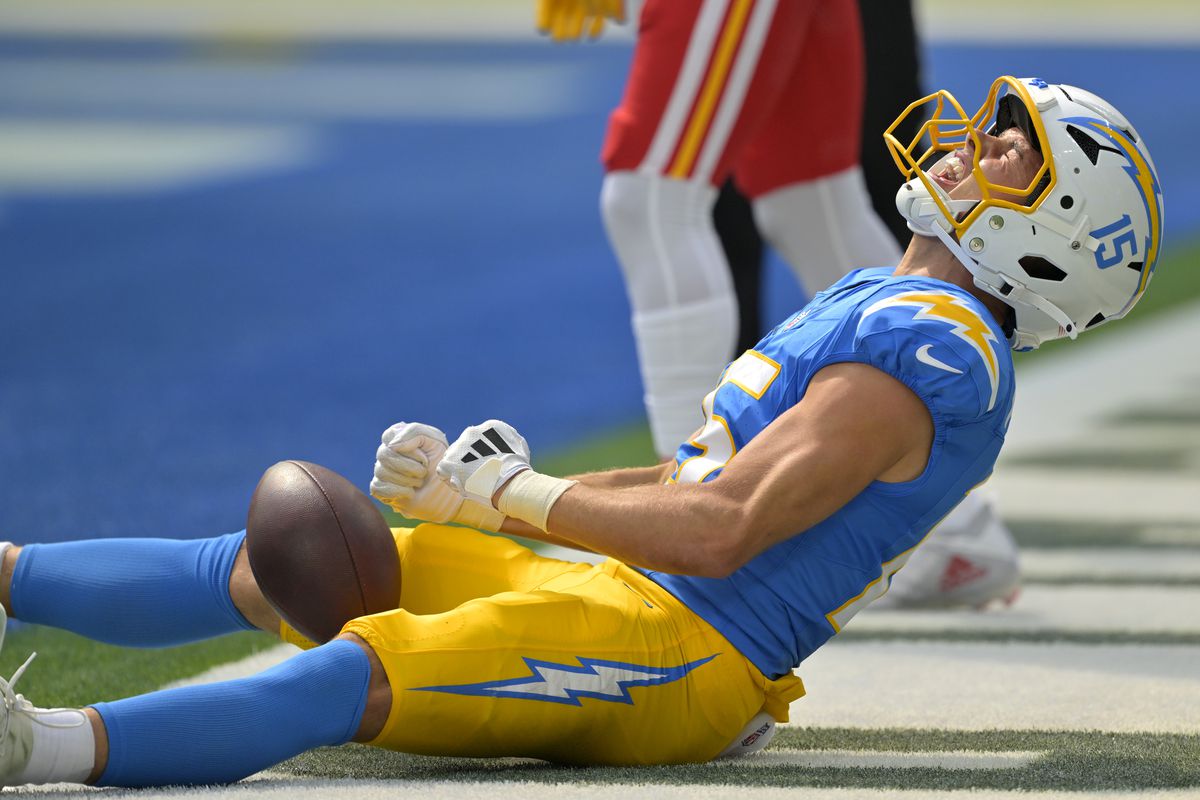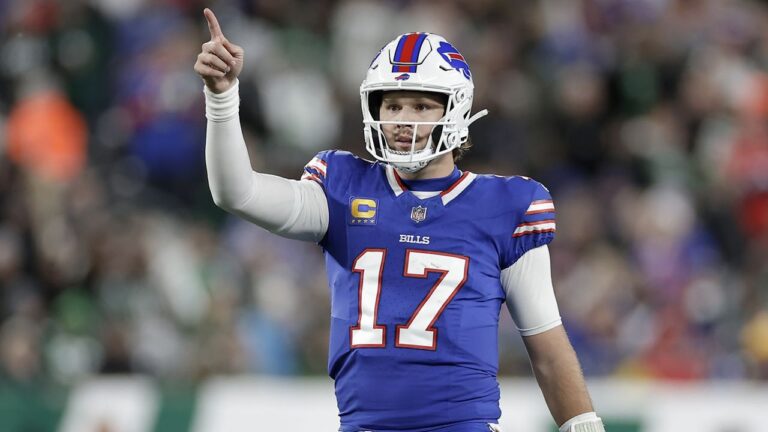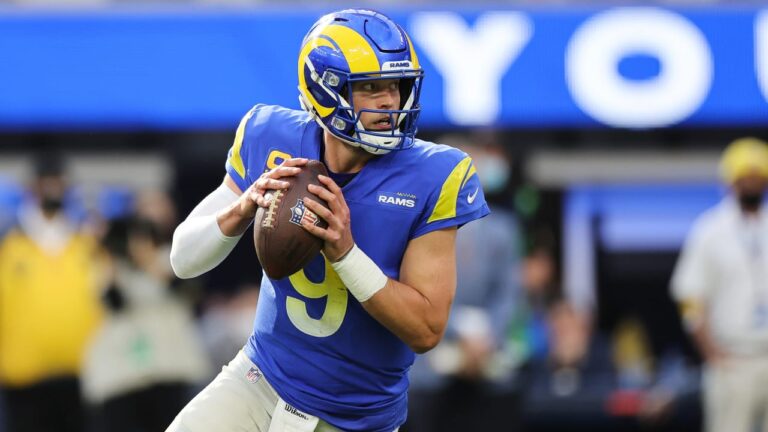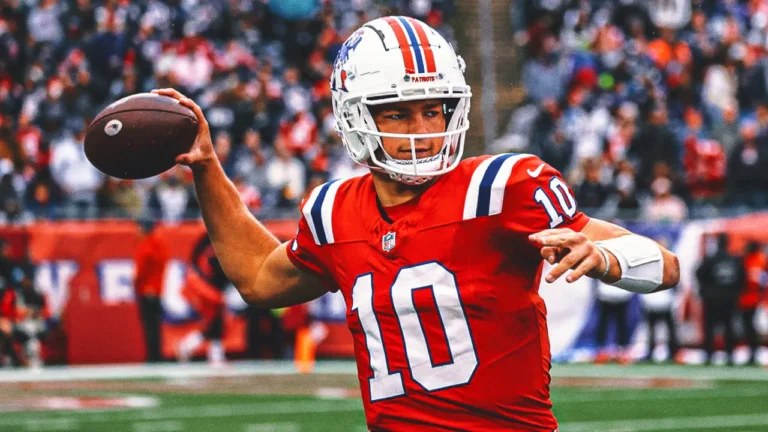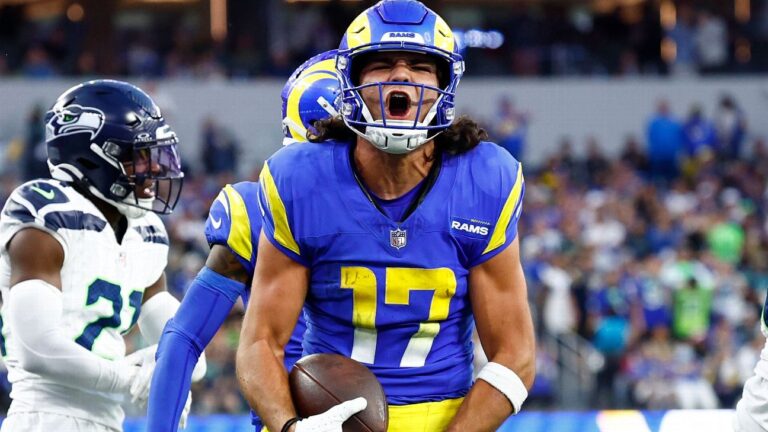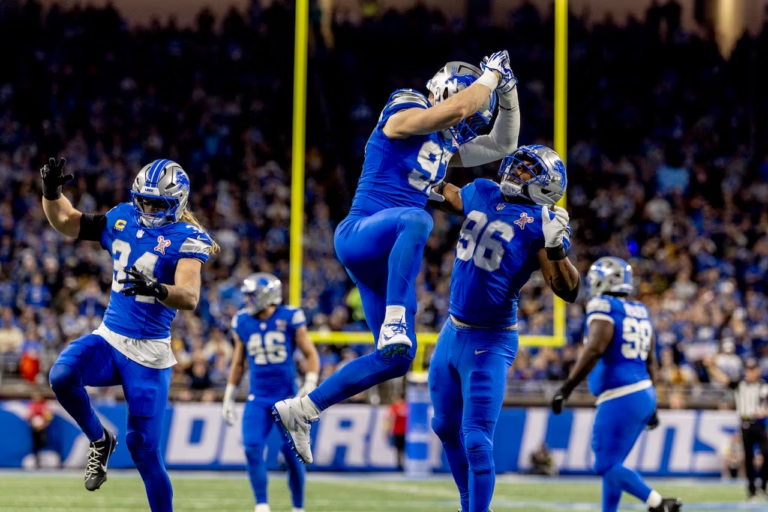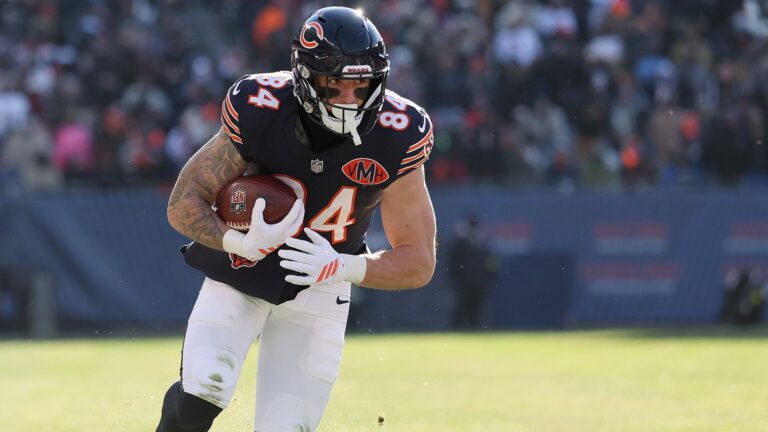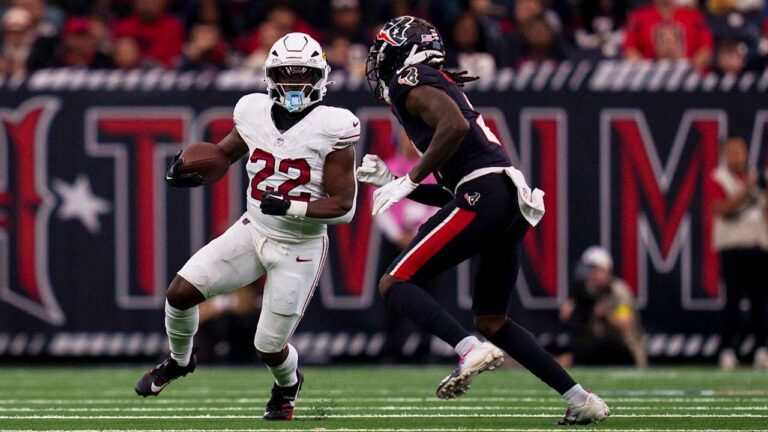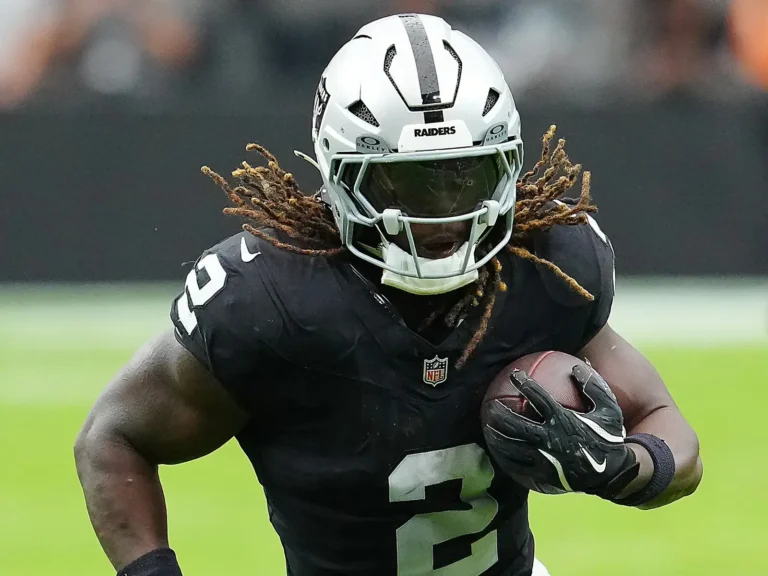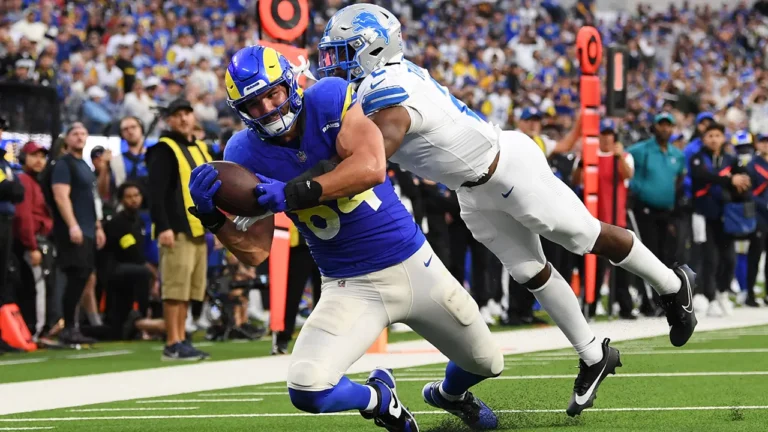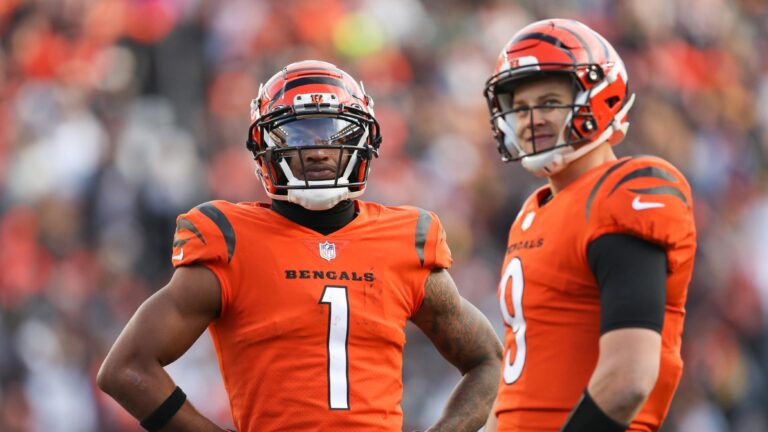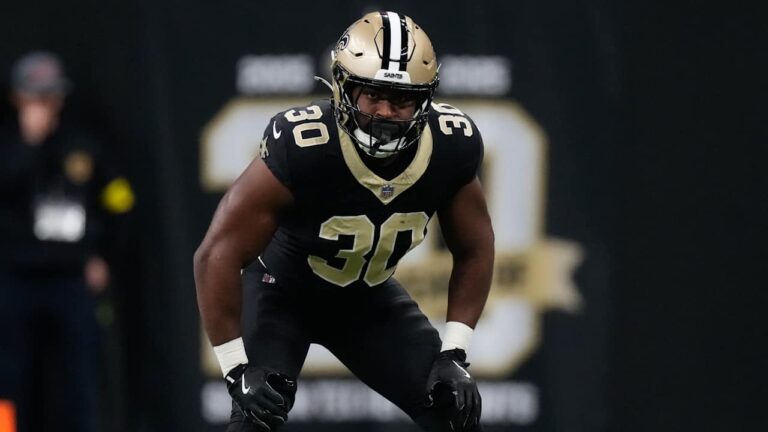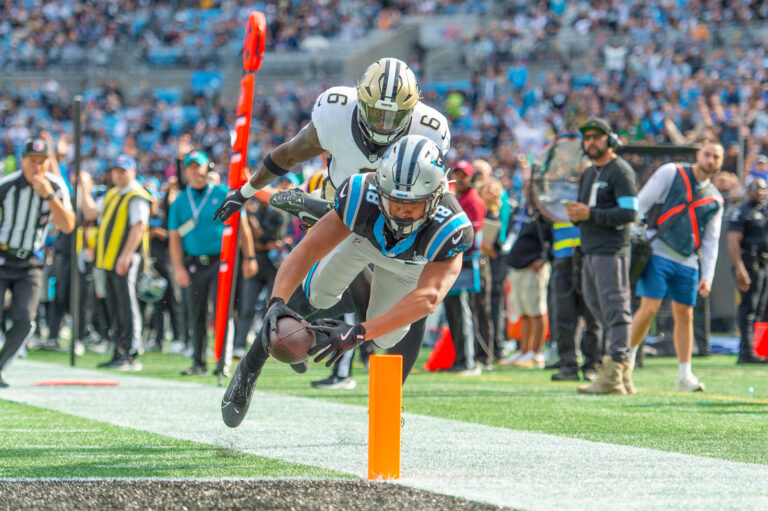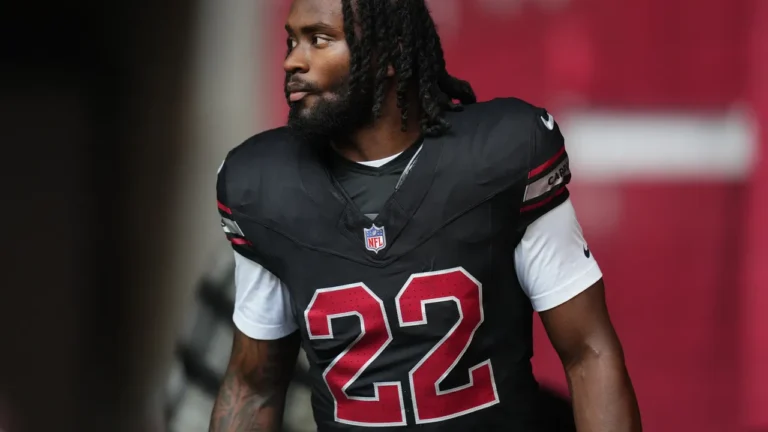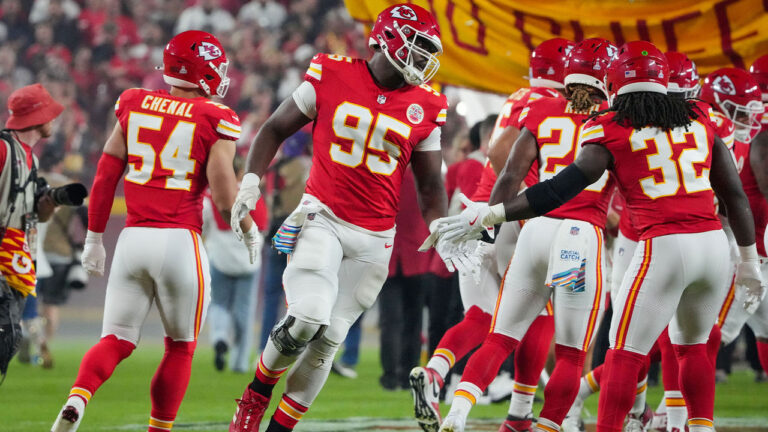Christian McCaffrey, CeeDee Lamb, or Justin Jefferson? That was the conversation last year, as I remember it. Now, bear in mind, it’s been almost 11 months and I’ve slept once or twice since then—parents of toddlers and infants all understand where I’m coming from here.
Some of the other contenders for the top draft slot last year that may make you lol or choke back tears include:
- Tyreek Hill (WR18)
- Breece Hall (RB16)
- A.J. Brown (WR20)

The underlying method to this previous pain madness is the importance of analyzing variance and never treating a first-round draft selection like it’s “easy” or a “no-brainer.”
Remember, there are a staggering 22 (yes, 22 picks) between your first-round pick and your second-round pick. The entire scope of the draft board could be flipped on its head. A smooth sea never made a skillful sailor. So, how do we navigate such treacherous waters? Read along and let’s find out.
Draft settings: 0.5 PPR, 12-team, 1 QB, 2 WR, 2 RB, 2 FLEX, 1 TE, 1 Kicker, 1 Defense
THE FIRST 4 ROUNDS – BUILD A FOUNDATION
- Ja’Marr Chase
- Ladd McConkey
- Jonathan Taylor
- Joe Burrow
JA’MARR CHASE
It’s a dangerous game to expect results from last season to translate to the next season. However, there was no greater positional advantage in fantasy than Ja’Marr Chase vs. the competition in 2024.
Last season, Chase averaged a flat 20.0 ppg, good for over 4 ppg better than WR2 Jefferson.
Using relative position value to evaluate how advantageous it was to have Chase on the team, the answer was clear-cut.
In 2024, the average WR1 scoring for receivers who played at least 10 games was approximately 15.2 ppg. So, taking Chase’s 20 ppg and comparing it to the average WR1 value, rostering Chase weekly yielded a 1.32x positional advantage.
The top 50 WRs if you averaged out their top-5 games over their last two seasons. Ja'Marr Chase clearly the highest ceiling WR right now. Other column is how many of the top-5 games came last year. pic.twitter.com/igUZKNw32K
— Hayden Winks (@HaydenWinks) June 3, 2025
While betting on a repeat triple crown would be ludicrous, there is still a very rational path to Chase repeating. The Bengals’ defense projects to be bad again in 2025, and Joe Burrow is still behind center.
Last season, Burrow targeted Chase on 25% of his targets and commanded a 34.5% share of the team’s first-read targets. With no reason to suspect Chase’s usage to dip, he projects to be among the safest, low-variance selections in round 1 with an obvious league-winning ceiling.
LADD MCCONKEY + JONATHAN TAYLOR = LEAGUE-WINNING VOLUME
Adding Chase provides a bit of a safety blanket to tinker with the rest of your draft. The goal, in my opinion, should still be predicated on building your weekly foundation.
I was prepared to risk missing out on a stud RB to pair with a dominant anchor like Chase. A zero-RB build was still very much in the cards, depending on how the draft board fell. Due to the influx of rookie backs and juicy veteran options that represent values (i.e., Travis Etienne, Aaron Jones, Chuba Hubbard) there was no RB void to press drafters’ feet to the fire.
Fortunately, Taylor and his 23.9 opportunity per game average from 2024 fell at the turn with juicy PPR darling McConkey tethered to Justin Herbert. That would be two juicy upside quarterbacks my team would be tied to.

After a high-testosterone approach to the season, the Chargers settled into relying on Herbert’s arm more, finishing the year sixth in pass rate over expectation, according to DraftSharks.
From weeks 1-4, the Chargers’ mismanagement of Herbert was criminal, pacing for only 387 pass attempts. After week four, Herbert’s numbers jumped to an average of 31.8 pass attempts per game, pacing for 540, which would have been 10th in the league last year.

As for McConkey, after the week five bye, he saw a nearly 50% increase in production across the board, pacing for nearly 1,400 yards on the back of 95 catches and 7 TDs.
With the investment in younger weapons around Herbert and a revitalized ground game, there’s little reason to believe the Chargers don’t experience a drastic spike in touchdown equity.
JOE BURROW + JA’MARR CHASE = BEST STACK IN FANTASY
Last season, in 0.5 PPR scoring, Burrow and Chase accounted for 42.5 ppg. In six games last season, Burrow and Chase combined for more than 50 fantasy points. Between that and the Bengals’ absurd pass rate over expectation in 2024, the fantasy goodness drips between these two juggernauts.

That consistency and high floor will, in all likelihood, translate in 2025. When Burrow fell to the end of the fourth round, there was very little deliberation for me to make.
After Burrow, there were still some high-value options to be considered. In retrospect, punting the position further down the line and adding another running back would have been reasonable. With Baker Mayfield (22.5 ppg in 2024) and Patrick Mahomes going in the next two rounds, players like Joe Mixon were also in consideration.
As a player who won a title in 2024 on the back of the Burrow-Chase stack, the value was clear. There was an almost 3 ppg drop-off on players going after Burrow, who appears to represent a fantasy tier-break.
THE MID-ROUNDS: SHORE UP THE LINEUP AND FEAST ON VALUE
- Courtland Sutton
- Quinshon Judkins
- Mark Andrews
- Travis Etienne
- Kaleb Johnson
- Rachaad White
This is where leagues can be won or lost. Now don’t hear what I’m not saying; you don’t win your league at the draft.
After the core is built, how managers decide to build around their core can lead to a hot start. That hot start. Data shows that starting 3-1 in leagues gives managers a roughly 75% chance of making the playoffs. On the flipside, starting 1-3 gives managers a measley 24.5% chance of fighting for a title.

Taking a look at my roster, there’s a lack of depth at the RB position. This might represent a precarious situation that would require me to dip my toe in the treacherous waters of the RB dead zone.

Now, at the start of round five, I had a hard choice between shoring up Taylor with Mixon, or punting the position another round and latching my WR room to another young, upstart QB with high upside. After much deliberation, I elected to hitch my wagon to Sutton, Bo Nix, and Sean Payton.
Week 8, the Nix Mendoza line. Against the Panthers, Nix erupted for 3 TDs through the air and 1 on the ground, while Sutton caught 8 of his 11 targets for an even 100 yards. From there on, Sutton was an ELITE WR option.

That 258 half-PPR scoring pace would have earned him WR9 overall honors, ahead of Jaxon Smith-Njigba (253) and just behind Lamb (263.4).
Throughout Payton’s career as a play caller, his WR1s have routinely earned 100+ targets per season and red-zone dominance, as evidenced by Sutton’s 18 TDs in two seasons under Payton.
Now with Sutton anchoring my WR3 as a high-upside potential target hog, my sights were set on the RB position. With options like Aaron Jones, James Conner, Quinshon Judkins, and David Montgomery available, there was value to be had.
Fortunately, Judkins fell to me, and I was able to scoop up the likely heir-apparent to Nick Chubb at the end of round 6.
Quinshon Judkins is going to SMASH his ADP in Fantasy Football this year:
— Snoog's Fantasy HQ (@FFSnoog) June 17, 2025
💥36th overall pick
💥Run heavy offensive scheme
💥Three years with 1,000+ rush yards
💥1/2 Freshman with 1,000+ rush yards
He’s going outside the top 20 RBs in fantasy football.pic.twitter.com/vdkuzSaRnV
After that, adding a tight end was imperative, and even though his play is notably falling off, Mark Andrews represented too much value to pass on. The next three rounds focused solely on the RB position, adding Travis Etienne, Kaleb Johnson, and Rachaad White.
Etienne and White represent high PPR upside with a history of elite past production, while Johnson could be in line for all of Najee Harris’ vacated volume.
With that, my RB room was deep, and my WR room was rich with volume and TD upside.
HANDCUFFS AND HIGH VARIANCE: THE END OF THE DRAFT
- Keon Coleman
- Hunter Henry
- Jordan Mason
- Isaac Guerendo
- Rashad Bateman
While Coleman failed to impress as a rookie, netting only 578 yards, he’s still tethered to the league MVP. It’s worth noting that his 17-game pace of 727 receiving yards and 5 TDs would have made for a better rookie season than:
- JSN
- Xavier Worthy
- Rome Odunze
A raw route-runner with jaw-dropping playmaking ability, Coleman is the perfect high upside dart throw WR to target late in drafts.
The same logic can be applied to Bateman, who finally put together a solid season, providing former MVP Lamar Jackson an explosive downfield target in a high-octane offense. There’s no risk to drafting Bateman this late in drafts.
Cuffing the likes of Mason and Guerendo to juicy situations like the ones in Minnesota and San Francisco makes drafting those two late in drafts absolute theft.
1. Jordan Mason
— SAL VETRI (@SalVetriDFS) July 3, 2025
He averaged 14.3 fantasy points and 106 rushing yards per game as a starter last season.
That rushing production would’ve ranked Top 3 in the NFL.
But that's not all because…
As for Henry, he’s fresh off a career high in receptions and receiving yards while tied to Drake Maye, who is primed to take a big leap in 2025.
Drafting from the 1.01 represents the excitement of nabbing whoever you want from the jump. But your fate is decided at the turns, and that requires a delicate balance of risk mitigation and roster construction strategy.

Building your core and leveraging a volume upside balance is key to hoisting the hardware at the end of the season!
